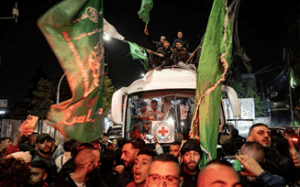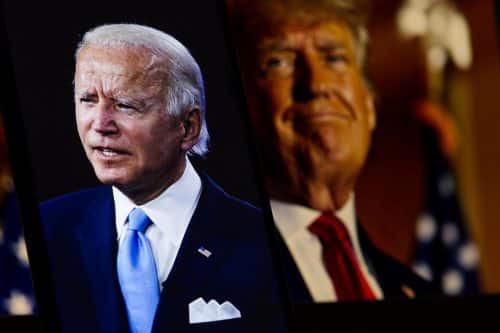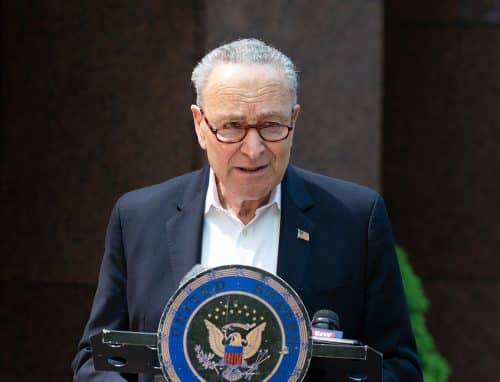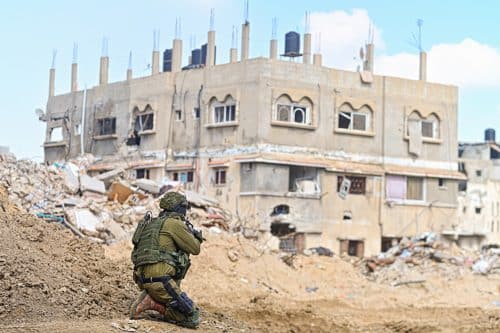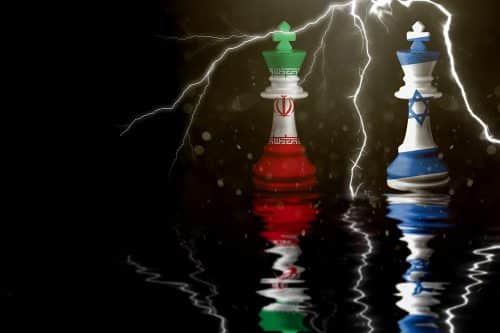The dilemma by Israeli decision-makers and the impact on the resumption of the war
The Deal
On November 24th, Israel and Hamas reached a temporary ceasefire agreement, or an agreed-upon framework of pause in the fighting, facilitated by mediators from Qatar, Egypt, and the US. The deal involved the release of around 50 Israeli hostages in exchange for Palestinian terrorists held in Israeli jails for committing terror crimes against civilians and soldiers. The sides were open to extend the temporary pause in exchange for the release of more Israeli hostages and the release of more Palestinian terrorists imprisoned in Israel. Israel also agreed to allow humanitarian goods to flow into the Gaza Strip, including food, water, medicine and fuel. Gazans are still strictly banned from traveling back to the north of Gaza, where over 1 million residents have been ordered to evacuate.
The Palestinian terrorist prisoners, primarily women and minors who have not been convicted of murder but of serious offenses like attempted murder and carrying out terrorist attacks, including seriously wounding Israelis, were part of the exchange. The agreed ratio was 3 Palestinian prisoners for one Israeli hostage. The hostage release occurred in four subsequent rounds from November 24th to November 27th, following specific schedules throughout the day.
Additionally, a separate hostage arrangement involving Thai nationals was negotiated between the Thai Government and Iran, which holds influence over Hamas. As of November 28 at 11:59pm, 61 Israeli hostages, 19 Thai nationals and 1 Philippine national were released from Gaza – a total of 81 hostages – and 150 Palestinian prisoners were released from Israeli prisons.
The initial agreement allowed for a potential extension of two more days, with a batch of 10 Israeli hostages slated for release each day. Terms included a complete halt of military activities, six hours per day of restricted Israeli aerial movements over Gaza, and a prohibition of any Israeli aerial presence over Southern Gaza, where Hamas’ command relocated after Israeli operations in Northern Gaza. Moreover, the deal included increased humanitarian aid and fuel shipments, with 200 trucks entering Gaza daily via the Rafah crossing.
The primary spokesperson for the international implementation of the deal was the Qatari Ministry of Foreign Affairs, the main sponsor of the negotiations. The released hostages primarily consisted of women and children. Hamas did not adhere to the principle of not separating families as was agreed upon. Hamas submitted the list of hostages to the Israeli government one day before their release and retained control over the process.
However, there were obstacles during the deal’s implementation. On the second day of release, hostages scheduled for release at 6 PM were freed much later, around 10:30 PM, and crossed into Israel just minutes before the Israeli-imposed deadline of midnight.
Hamas’ conduct during the process was part of the psychological warfare against Israel. They claimed Israel violated the agreement and, at times, almost jeopardized the deal. Notably, they released some hostages without family members as agreed upon, claiming they could not be found, offering to substitute elderly women instead. Hamas orchestrated a publicized display during the hostage release, parading the hostages hand in hand and instructing them to wave to their captors as they boarded ICRC vehicles and walking hand in hand with the hostage children, attempting to showcase a humane image to the media.
The aftermath of their release
Upon their release, the hostages underwent medical check-ups in Israeli hospitals. Most were in relatively good health, though some had suffered significant weight loss due to malnutrition. Unfortunately, an 84-year-old hostage was in critical condition as she did not receive her necessary medication while in captivity. Hamas did not permit the ICRC access to the hostages.
Following their release, most hostages refrained from publicly sharing details about their imprisonment conditions. However, one released hostage, Ruth Munder, 78, mentioned the lack of proper sleeping arrangements, with some individuals having to sleep on chairs or benches due to the absence of mattresses. Another account from the aunt of a 12-year-old hostage, Eitan Yahalomi, revealed that children were subjected to distressing videos by Hamas while held captive, with Hamas terrorists threatening to shoot crying children. Upon arrival in Gaza, the released hostages faced beatings from Gazan civilians.
The Palestinian hostages who were released received a hero’s welcome and were celebrated by Hamas supporters, with Hamas flags displayed prominently across Judea and Samaria (commonly referred to as “The West Bank”).
Regional impact
In the initial days of the ceasefire, both Hamas and Hezbollah halted their military activities. However, on November 28th, the IDF reported three incidents involving detonation of improvised explosive devices (IEDs) in two separate instances near IDF troops. Some soldiers sustained minor injuries, prompting a retaliatory response from the IDF.
In an unusual move, Hezbollah independently declared that it was also committed to the ceasefire. This could attest to Hezbollah’s interest to find a way off the ledge and refrain from committing to the intensification of the Israel-Lebanon front, possibly as deterrence from a full-scale conflict with Israel. Meanwhile, the Houthis announced their intention to continue their attacks on Israel, indicating their non-compliance with the ceasefire agreement.
Implications of the deal for Israel
The Israeli leadership has found itself debating the pros and cons of this deal, with several constraints and considerations shaping its final decision.
- Advantages: The most obvious consideration in favor of this deal is Israel’s commitment as a State, to the safe return of its citizens, cherishing the value of life. In addition, the issue of the hostages remains an open wound in the Israeli society, and the sensitivity that qualifies it was threatening to compromise the public’s willingness to have the government’s back in this war. The knowledge that Israelis, including many civilians, were held in poor conditions and under threat albeit still alive, plays a central role in the decision to suffer a minor blow in the undisturbed advance of the fighting in order to mitigate this situation.
- On top of that, Israel’s readiness to have the humanitarian pause was helpful in guaranteeing the continuation of the American support for resuming the military activity to defeat Hamas in Gaza after the pause. This support becomes more important as the US administration is exposed to pressures and demands Israel to avoid evacuating civilians from the combatting area as it extends its military operations to the southern part of the Gaza strip
- Disadvantages: However, this deal does not come without a cost.
- Incentivizing future hostage taking: Israel’s traditional policy rejects negotiations with terrorists, based on the notion that prisoner and hostage swap deals will only incentivize future cases of hostage taking. That being said, Israel has agreed in the past to multiple swap deals such as the 2011 Gilad Shalit deal, that saw 1,027 terrorists released for a single Israeli soldier; the 1985 Jibril Deal where three Israeli POWs were released in exchange for 1,151 prisoners; and others.
- Strengthening Hamas in the Palestinian arena, mainly in the areas controlled by the Palestinian Authority, and in the Arab and Islamic world.
- Improving Israel’s leverage by putting more pressure on Hamas: Some criticized this deal for being too premature, and that the ongoing military campaign in Gaza will improve Israel’s leverage over Hamas, lowering the cost and forcing Hamas’ hand into releasing more hostages in return for less prisoners and fuel supply. Prime Minister Netanyahu and others in the Israeli leadership insisted that US President Biden’s interference, and Israel’s relentless military pressure on Hamas, considerably lowered the initial cost that Hamas had demanded.
- Recidivism: Released Palestinian prisoners, in particular, when they are released to Judea and Samaria, have a tendency for recidivism, or returning to the path of terrorism. It is estimated that hundreds of Israelis were murdered by terrorists who were released in the Shalit Deal including leader of Hamas in the Gaza Strip, Yahya Sinwar; that the Jibril Deal released prisoners were spearheading the First Intifada (1987-1989) and that the prisoners released during the 1990s led the Second Intifada (2000-2005). Bereaved parents strongly protested the notion that while some Israelis will be released, others will become victims of those who have been imprisoned in the first place for attempted murder, and are likely to continue the path of their predecessors.
- Allowing Hamas to regroup and rearm: Hamas held hostages precisely in order to gain this bargaining chip that allows it to better position itself to continue the war with Israel. This pause was criticized for the window of opportunity it provides Hamas to reorganize itself both in the north and the south of the Gaza Strip.
- Demotivating Israel to resume the war following the pause: The main concern that the deal’s critics voiced was international pressure on Israel to use this opportunity to halt the war altogether. Hamas has already reportedly proposed the release of all hostages in return for ending the war, which Israel rejected on the spot. This comes in light of reported American pressure on Israel to compromise its war objectives and strive for a permanent cease-fire, and French President Macron’s request from Israel to declare one. Israeli leadership stressed that in the end of the pause, the war will be continued, with the government’s resolution limiting the extended period of time to 10 days to avoid a dictation of terms by Hamas and an endless or over-prolonged “fudging” of the war. The IDF has also announced its operational plans for the rest of the northern Gaza Strip and to its southern part, stressing that the war is set to continue at the end of the pause and reach its objectives.
